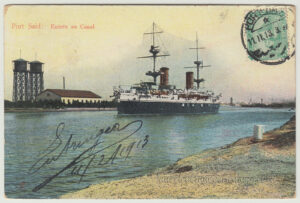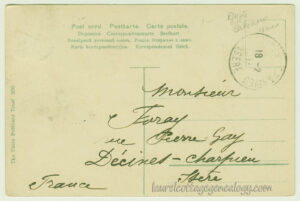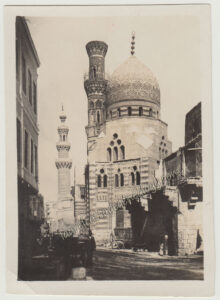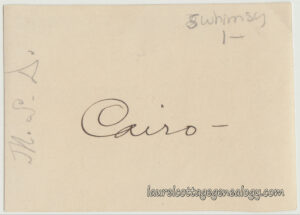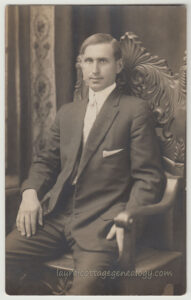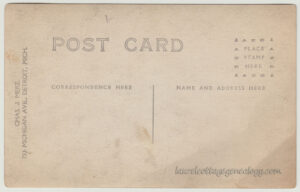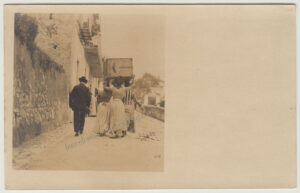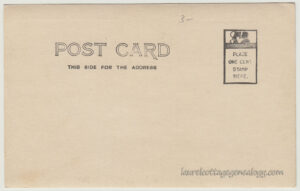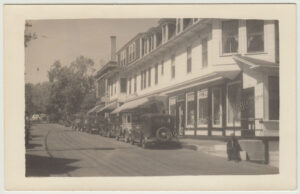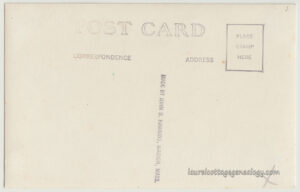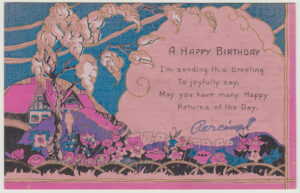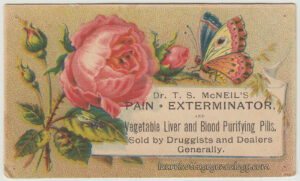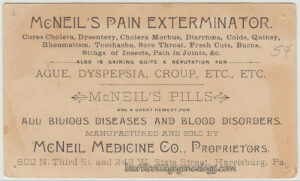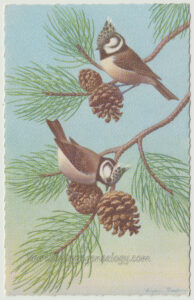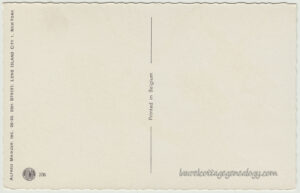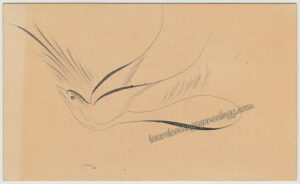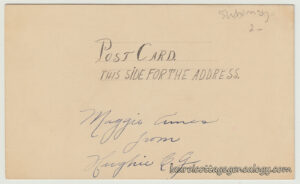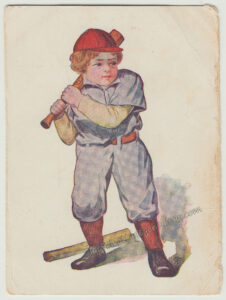
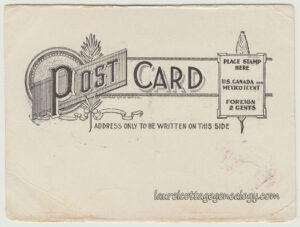
Undivided back postcard. Circa 1906. Publisher or Printer: Stationers Manufacturing Co., Quincy, Illinois.
Price: $4.00
I had wanted to get this card up for MLB opening day, but it didn’t make it. No biggie, anyway it’s showing a young ball player at bat (or in the bullpen). (I really bought it for the design on the back, which is nice.)
But who was the artist? We found another postcard online, same image, with “Copyright 1906. J. Tully.” printed on it. Our card, per the reverse, was printed by Stationers Manufacturing Company in Quincy, Illinois. Tully was out of Chicago, per other cards online, but no records were found for him (either as artist or in the card publishing/printing business). Some postcard sellers list him as artist, but he could have been a publisher, especially given the fact that initials “CNB” or “NBC” appear at the bottom right of the ball player, leading one to think that they could be the artist’s initials. On the other hand, oftentimes the “C” in initials like that stood for “Company.” So, the actual artist could have been an unnamed one within that company.
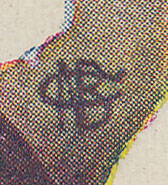
For a better understanding of the complicated world of postcard printers, publishers, jobbers, artists and photographers, see the various web articles under Metropostcard’s “Metropostcard Guides.” (Proof – as if we needed it 😉 – that things are almost always more involved than we imagine.)
Stationers (or Stationers’) Manufacturing Company:
There was a company under this name in New York and also in Detroit (the Detroit company went out of business in 1900), but whether either had any link to ours in question, is unknown without more in-depth searching. The earliest I found, on a relatively quick search, for Stationers in Quincy, was the following article – appearing in an October 1900 publication of The Paper Mill and Wood Pulp News. Going further – Henry F. Dayton, owner of Stationers, established the Western Tablet and Stationery Company slightly afterward, about 1906, and Western Tablet became a leading manufacturer of paper tablets (i.e. writing tablets, notebooks).
1900 – October – enlarging the Stationers plant:
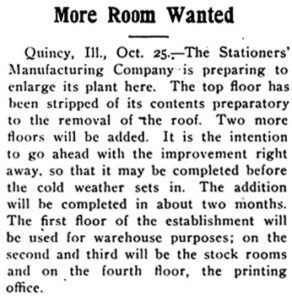
1902 – 218 ½ N. 4th Street – William W. Benton, of Mendon, Illinois, manager.
1906 – October – “controlling practically the entire paper tablet outlet.” Henry F. Dayton, president:
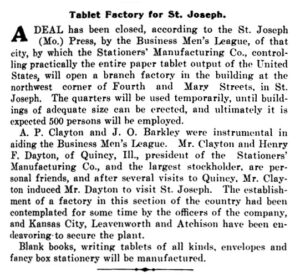
1909 – Henry F. Dayton – Western Tablet, the biggest tablet factory west of the Mississippi:
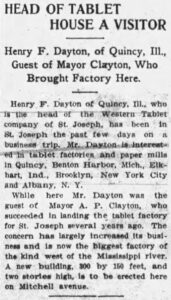
1910 – 209 N 2nd Street, Quincy – writing and pencil tablets, composition books, envelopes, papeteries.
1913 – February – Dayton Tablet Works destroyed in fire; Stationers Manufacturing Co. sustains damage
1915 – March – Fire wipes out the Dayton Pump Co., Stationers Manufacturing Co. and the Dayton-Dick Magneto Company. Henry F. Dayton was president of all three. Nothing substantial was found for the Stationers Manufacturing Co. in 1916 or beyond, so this may have been the end of the company. (That’s a typo in the article appearing as “Hayton.”)
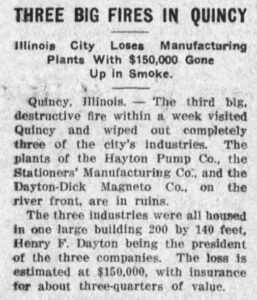
Sources: “Metropostcard Guides.” Metropostcards.com. (accessed May 16, 2022).
“More Room Wanted.” The Paper Mill and Wood Pulp News, Vol. XXXIII, no. 43, p. 12. October 27, 1900. L. D. Post, publisher, New York. (google.com/books).
Certified List of Illinois Corporations Filed With the Recorder of Deeds. p. 227. Phillips Bros. State Printers, 1902. (google.com/books).
“Tablet Factory For St. Joseph.” The American Stationer, Vol. LX, no. 13. September 29, 1906, p. 12. (google.com/books).
The Paper Box Maker and American Bookbinder, Vol. XIV, no. 12. October 1906. L. D. Post, publisher. New York. (google.com/books). September 11, 1909.
“Head Of Tablet House A Visitor.” St. Joseph Gazette (St. Joseph, Missouri), September 11, 1909. Saturday, p. 10. (Newspapers.com).
American Trade Index, 10th Issue. 1908 – 1910. New York, NY. 1910. p. 214. (google.com/books).
“Disastrous Fire In Tablet Plant.” The Daily Gate City, (Keokuk, Iowa) February 18, 1913. Tuesday, p. 7. (Newspapers.com).
“Three Big Fires In Quincy.” Washington Citizen (Washington, Missouri). March 19, 1915. Friday, p. 2. (Newspapers.com).

